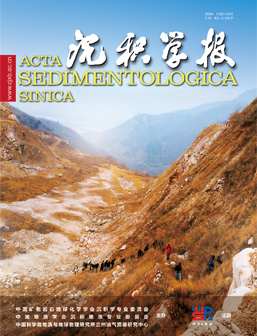The pore evolution difference of different lithology in the Middle Permian Qixia Formation in Gaoshiti area, central Sichuan Basin
doi: 10.14027/j.issn.1000-0550.2024.128
- Received Date: 2024-07-09
- Available Online: 2025-03-04
-
Key words:
- pore evolution /
- diagenesis /
- Middle Permian /
- Qixia Formation /
- Gaoshiti area of central Sichuan
Abstract: [Objective] The beach facies dolomite reservoir of the Middle Permian Qixia Formation in the central Sichuan Basin exhibits significant potential for oil and gas exploration, but the systematic study on diagenetic sequence and pore evolution is relatively weak. [Methods] The petrological characteristics and pore genesis of the Qixia Formation were investigated through core observation, thin section analysis, cathodoluminescence examination, and image recognition techniques. This study aims to delineate diagenetic variations and pore evolution among different lithologies. [Results] In the Gaoshiti area, four types of rocks are identified within the Qixia Formation: micrite limestones, micrite grain limestones, sparry grain limestone, and residual grain dolostone. Four types of Reservoir space are observed: intergranular dissolved pores, intragranular dissolved pores, fractures and vugs. Each rock type has experienced distinct diagenesis: type of dissolution and its intensity vary across different lithologies. The two kinds of granular limestone are mainly dissolved by meteoric water, and the residual granular dolomite is more strongly dissolved by meteoric water, and on this basis, dolomitization and burial period dissolution occur. Recrystallization is more pronounced in residual grain dolomite whereas compaction and pressure dissolution is more evident in micrite grain limestone. The key diagenesis and stages influencing pore development vary among different types of rock: the pores of the two types of granular limestone are mainly formed by quasi-syngenetic dissolution, and then partially destroyed by compaction and cementation during the burial stage. The dissolution and dolomitization in the para-syngenetic stage are the key to the formation and preservation of the pores of the residual granular dolomites, while the dissolution and tectonic fracture in the burial stage are beneficial supplement, and the cementation in the shallow burial stage destroys the pores. [Conclusion] The difference of diagenesis caused the difference of pore evolution and formed four lithologies with decreasing pore development degree: Residual grain dolostone (plane porosity: 2.10 %), sparry grain limestone (plane porosity: 1.24 %), micrite grain limestone (plane porosity: 0.41 %), and micrite limestone (pyknotic).
| Citation: | The pore evolution difference of different lithology in the Middle Permian Qixia Formation in Gaoshiti area, central Sichuan Basin[J]. Acta Sedimentologica Sinica. doi: 10.14027/j.issn.1000-0550.2024.128 |






 DownLoad:
DownLoad: